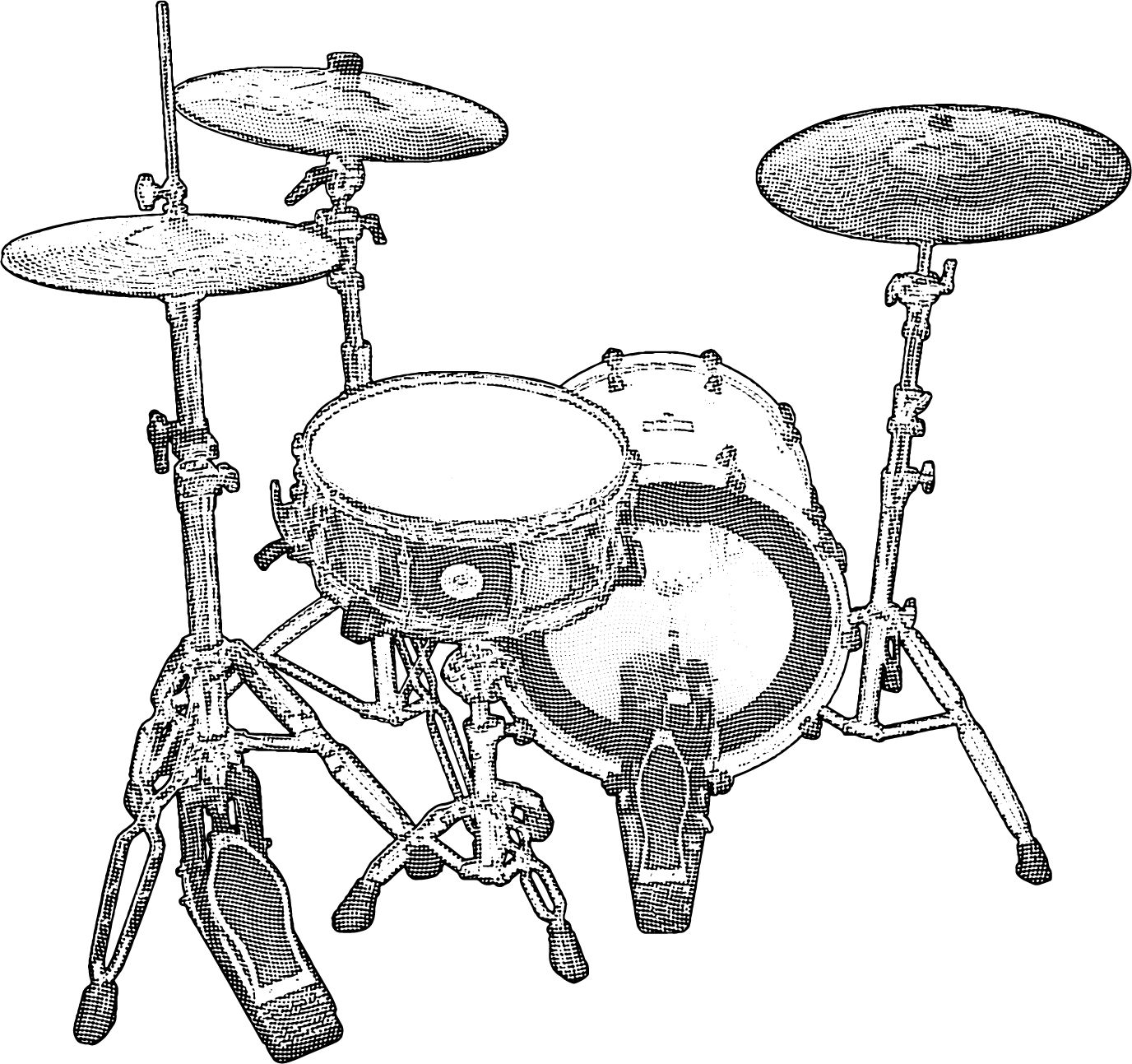The Money Beat

Hörempfehlung
Listening recommendation
Billie Jean (Michael Jackson),
Money For Nothing (Dire Straits),
Highway to Hell (AC/DC),
Help (Beatles),
Another One Bites the Dust (Queen),
Won’t Back Down (Tom Petty),
Celebration (Kool & The Gang),
. . .
PRÄZISION
Snare und Bass-Platzierung!
Achte darauf, Bass-Drum- und Snare-Schläge immer genau („tight“) mit Becken-/HiHat-Schlägen zusammen zu spielen.
TIGHTNESS
Snare and Bass-Drum placement!
Make sure to always play your Bass Drum and Snare strokes exactly – tight – together with your Cymbal/HiHat strokes.
DYNAMIK & BALANCE
HiHat Lautstärke!
In Pop- und Rockmusik spielen Bass-Drum (als Downbeat auf den Zahlzeiten 1 & 3) und Snare (als Backbeat auf den Zählzeiten 2 & 4) die Hauptrolle. Spiele die HiHat also nicht zu laut. Du kannst die HiHat entweder nur mit der Stockspitze (leise), mit dem Stockschaft (laut) oder in ständigem Wechsel mit Schaft und Spitze anschlagen (laut-leise). Das Lautstärkenverhältnis zu Snare und Bass-Drum sollte aber immer ausgewogen sein.
HiHat-Fuß!
Oft liegt auch der HiHat-Fuß zu locker auf dem Pedal, was dazu beiträgt, dass die Hi-Hat laut und sehr „rauschig“ klingt. Suche Dir eine Fuß-Position, in der Du die Hi-Hat bequem, aber fest schließen kannst.
Ride Lautstärke!
Auch das Ride soll Bass-Drum und Snare nicht übertönen. Spiele das Ride-Becken deshalb statt mit dem Stockschaft eher mit der Stockspitze an. Falls Du dennoch häufiger den Rand mit dem Stockschaft triffst, solltest Du dir den Aufbau der Ride-Beckens genauer anschauen. Vermutlich kannst Du das Problem lösen, indem Du das Becken einfach etwas schräger einstellst.
DYNAMICS & BALANCE
HiHat Volume!
In pop and rock music, bass drum (the downbeat on 1 & 3) and snare (the backbeat on 2 & 4) are the center of a groove. Hence, better not play the HiHat too loud. You can either strike the HiHat with the tip of the stick (soft), the shaft (loud) or alternate between shaft and tip (loud – soft). Whichever way you play, pay attention to a balanced volume ratio between HiHat and Snare/Bass Drum.
HiHat foot!
Find a foot position where you can close the hi-hat comfortably but firmly. If the HiHat foot rests too loose on the pedal, the HiHat sounds loud and ‚washy‘.
Ride Volume!
The same applies to the Ride Cymbal: it should not drown out the bass/snare. You should avoid playing the Ride with the shaft of the stick, especially on the edge of the cymbal. Instead, play the ride cymbal with the tip of the stick. If you do accidentally hit the edge, you should take a closer look at the positioning of the cymbal stand. Experiment with different angles until you found a cymbal position that is comfortable for you.

Fehler gefunden?